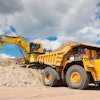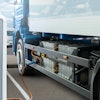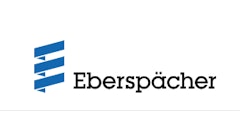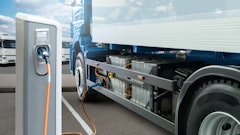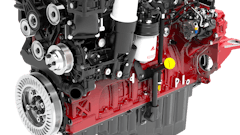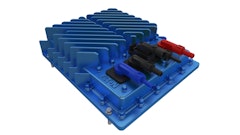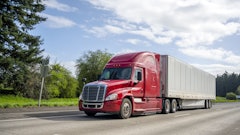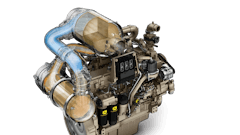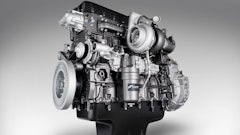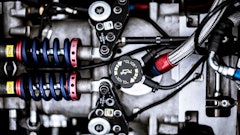The federal government is trying a new approach to reduce emissions from diesel engines. Two major pieces of recently signed federal legislation — the Energy Policy Act of 2005 and the U.S. Highway Act of 2005 — both set the stage for significant emission reductions by adding particulate filters, oxidation catalysts and other aftertreatment technologies to existing trucks and off-highway equipment.
Unlike previous federal initiatives, the new laws do not call for regulatory programs forcing manufacturers to reduce emissions from new equipment. Instead, they create funding programs to help equipment owners offset the cost of adding aftertreatment devices to their equipment or repowering the equipment with new, low-emission engines.
“This represents the first time in the retrofit world where there is something in place to receive substantial funding specifically for retrofitting,” says Allen Schaeffer, executive director, Diesel Technology Forum, a national clearinghouse on diesel issues. “EPA has had line items in the budget before and has had some supplemental funding that was used for retrofit programs, but this is the first time there will be a steady stream of funds.”
How much funding will be available remains to be seen. The energy legislation, which was signed by President Bush in August, calls for spending $1 billion on retrofit programs over the next five years — or up to $200 million per year. The money, however, is not guaranteed. Funding for each year of the five years won’t be determined until Congress considers the annual appropriations bills that establish budgets for federal agencies, which means funding may vary depending on the size of the deficit, tax revenues and other government priorities.
Nonetheless, the program is significant. “It is a very broad program with a wide range of opportunity for both on-highway and off-highway,” says Schaeffer. “It also gives priority to non-attainment areas for carbon dioxide and particulate matter.”
Seventy percent of the funds will be spent on nationwide retrofit programs; the remaining 30% will be used to help fund state programs. Given its national emphasis, the EPA program is more likely to be utilized by national, on-highway fleets, as well as contractors that operate in several states.
More retrofit funding for highway bill
Local highway contractors are more likely to benefit from the U.S. Highway Act of 2005.
The legislation gives contractors access to a pool of more than $1.5 billion per year that Congress sets aside for projects designed to reduce congestion or improve air quality. This is significant because many states and municipalities have forced highway contractors to “voluntarily” retrofit their equipment in order for them to bid on government projects.
The highway bill gives contractors access to Congestion Mitigation and Air Quality Improvement (CMAQ) funding, which will total $8.6 billion over the next five years. Federal highway legislation has included CMAQ funding since the 1990s, but the money has typically been used on entrance/exit ramps, carpooling lanes and mass transit projects.
The new legislation acknowledges studies showing that retrofitting existing diesel equipment is a very cost-effective way to reduce emissions. For example, spending $5,300 to repower a piece of off-highway equipment will achieve the same amount of emission reductions as spending $126,000 on a vehicle powered by alternative fuel or spending $23,000 on a (successful) program to encourage ride-sharing.
Lawmakers’ focus on existing equipment is a tribute to one of the most important features of diesel engines — their durability. Because they have an operating life that can extend 20 to 30 years, regulators know it will take decades for new “clean diesel” engines to saturate the market. By offering financial incentives, lawmakers hope they can reduce enough emissions so they don’t have to implement more stringent regulations to meet air quality standards.
Regulatory approach still very much alive
Some states are already moving toward the regulatory approach. Although the Clean Air Act Amendments restrict the ability of states to impose emission-reducing regulations for off-highway equipment, clever regulators have found loopholes in the federal legislation.
The California Air Resources Board (CARB), for example, plans to implement emission-reduction standards for construction and agricultural equipment. That is based on CARB’s own 1998 determination that the particulate matter found in diesel exhaust is a toxic air contaminant, a designation that allows it to impose restrictions.
Whether lawmakers will succeed through financial “carrots” or regulatory “sticks,” it’s clear that retrofitting will become a key portion of the off-highway aftermarket industry. Many OEMs have already established internal business units to develop, market and sell retrofits.
These manufacturers realize that they need to be ahead of the learning curve for customers who will be turning to them for information about retrofits and their potential impact on equipment performance and maintenance requirements.
These same manufacturers are analyzing warranty issues. For example, back pressure generated by low-quality or poorly maintained aftermarket components could lower fuel economy and damage engines. Some components may not work without electronically controlled engines or low-sulfur fuels. In addition, customers and dealers will have to contend with space concerns, especially on smaller equipment.
“There will be retrofits and the whole concept of incentives is a good idea, but there are still a lot of concerns,” says Darrin Drollinger, vice president of technical & safety services for the Association of Equipment Manufacturers (AEM).
Schaeffer agrees. “There will always be challenges, especially in the off-highway market where there is a huge diversity in equipment,” he says.
But Schaeffer is optimistic. “We have come a long way in the last five years,” he says. “OEMs have a lot more experience in the use of aftertreatment devices and there are retrofits available for backhoes, dozers, and even skid-steer loaders, which shows the range of technology available.”
Schaeffer believes the new federal programs will do a lot to promote retrofits. “The clever marketers will be the OEMs who realize the importance of bringing the end-users together with the [government] funding that will make retrofits financially viable.”
Dave Jensen is a contributing writer based in Milwaukee, WI.

